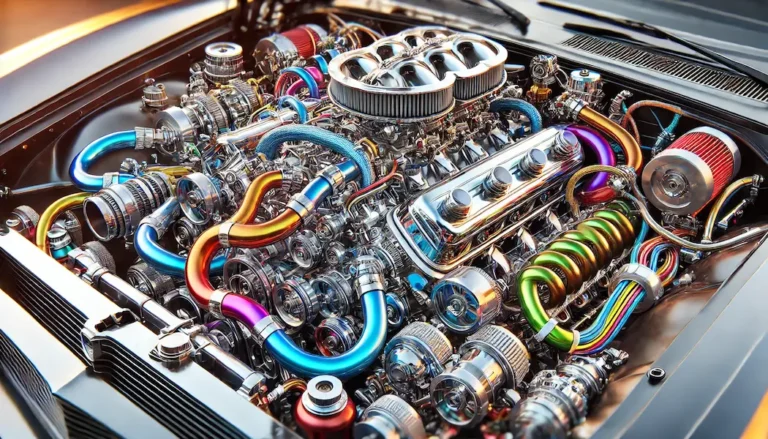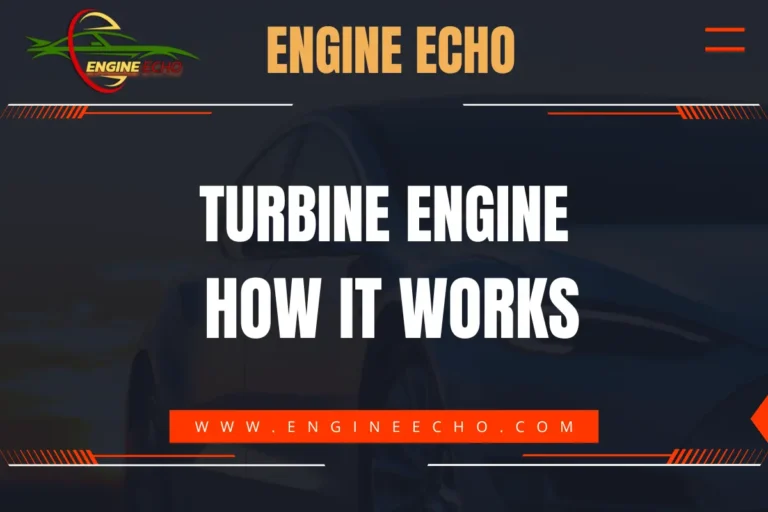Cars with Start Stop Engine: Efficiency Boosters

Key Takeaways
- Fuel Efficiency: Start-stop engines significantly reduce fuel consumption by shutting off the engine when the vehicle is idle.
- Emission Reduction: This technology plays a key role in lowering vehicle emissions, contributing to a cleaner environment.
- Cost Savings: Owners can enjoy long-term savings on fuel and maintenance with start-stop engines.
- Driving Experience: Modern start-stop systems are designed to operate seamlessly, with minimal disruption to the driving experience.
- Environmental Impact: Start-stop engines help reduce greenhouse gases, especially in traffic-dense urban areas.
- Future Potential: Advancements in battery technology and integration with electric vehicles could further enhance start-stop systems.
Introduction to Start-Stop Engine Technology
In today’s world, where efficiency and environmental responsibility are no longer just buzzwords but necessities, start-stop engine technology has emerged as a true game-changer. I’ve always been intrigued by how such a straightforward idea—just turning off the engine when you don’t need it—can lead to big improvements in fuel economy and emissions. It’s one of those smart innovations that just makes sense in today’s world.
How Start-Stop Engines Work
The mechanics of a start-stop engine system might seem complex, but they’re brilliantly designed to operate in the background, enhancing your drive without demanding your attention. Here’s a simplified breakdown:
- Engine Shutdown: Imagine you’re sitting at a red light. With a start-stop system, your car’s engine shuts off automatically, saving fuel that would otherwise be wasted.
- Restarting the Engine: As soon as you lift your foot off the brake, the engine springs back to life, ready to go as soon as you are. It’s like having an efficient co-pilot who knows exactly when to conserve energy.
- Sensors and Electronics: These systems are packed with sensors that monitor everything from battery charge to engine temperature, ensuring that the start-stop feature only kicks in when it’s beneficial and safe.
When I first encountered a start-stop engine, I’ll admit, I was skeptical. The idea of my car shutting off and restarting multiple times during a drive seemed like it would be more of a hassle than a help. But after experiencing it firsthand, particularly in city traffic, I quickly realized how unobtrusive and beneficial it really is.
Benefits of Start-Stop Engine Technology
The benefits of start-stop engines go beyond just saving fuel—they represent a step forward in making our vehicles more efficient and environmentally friendly.
Fuel Efficiency
One of the first things I noticed after switching to a car with start-stop technology was how much less I was spending on gas. It’s a small change that adds up over time, especially during my daily commutes in heavy traffic where the engine’s idle time is minimized.
Emission Reduction
I care a lot about reducing my carbon footprint, and start-stop systems have made it easier for me to drive with a clearer conscience. By cutting down on the amount of time the engine runs while the car is stationary, these systems help lower the emission of harmful pollutants, making each drive a bit more environmentally responsible.
Cost Savings
At first, I worried that all the stopping and starting might wear out the engine faster, but it turns out I’ve actually saved on maintenance costs too. With less time spent idling, the engine components experience less wear and tear, which means fewer repairs and lower maintenance costs in the long run.
Extended Engine Life
By reducing unnecessary engine idling, start-stop systems not only save fuel but also contribute to a longer engine life. This feature is particularly beneficial for someone like me who values long-term reliability in a vehicle.
Common Misconceptions about Start-Stop Engines
Despite the clear advantages, there are still some misconceptions that need to be addressed:
Myth: Frequent Restarting Damages the Engine
This is a common myth I’ve heard from friends and fellow drivers. The reality is that start-stop systems are specifically designed with durable components that can handle the frequent starting and stopping. In my own experience, I haven’t noticed any negative impact on engine performance.
Myth: Start-Stop Systems Lead to Higher Maintenance Costs
Another misconception is that these systems will lead to higher maintenance costs due to their complexity. However, as I’ve found, the reduction in engine wear often offsets any potential increase in maintenance expenses.
Myth: Start-Stop Engines Are Unreliable in Extreme Weather
Living in a region with both hot summers and cold winters, I was initially concerned about how the start-stop system would perform in extreme weather. Fortunately, these systems are smart enough to adjust their operation based on external temperatures, ensuring reliable performance year-round.
Types of Vehicles Equipped with Start-Stop Engines
Start-stop technology is no longer exclusive to luxury cars; it’s now found across various types of vehicles, making it accessible to a broader range of drivers.
Passenger Cars
From compact cars to larger sedans and SUVs, start-stop systems are becoming a standard feature. I’ve personally driven several models in this category, and the transition between stopping and starting is so smooth that it’s easy to forget the system is even there.
Hybrid Vehicles
For those who prioritize fuel efficiency, hybrid vehicles often combine electric power with start-stop technology for even greater savings. In my experience with hybrids, this combination offers the best of both worlds—lower fuel costs and reduced environmental impact.
Luxury Vehicles
Luxury brands like BMW and Mercedes-Benz offer some of the most refined start-stop systems on the market. When I test-drove a BMW 3 Series, I was impressed by how seamlessly the system operated, maintaining the high level of comfort and performance expected from a luxury car.
Commercial Vehicles
Even in the commercial vehicle sector, where efficiency is key, start-stop technology is gaining traction. I’ve noticed its increasing presence in trucks and buses, where it helps reduce fuel consumption during long periods of idling.
Impact on Driving Experience
I understand that the driving experience is crucial for many people, including myself. Here’s how start-stop systems integrate into everyday driving without compromising comfort or control:
Smoothness of Operation
Honestly, the transition from engine off to engine on is so smooth, you barely notice it’s happening—it just feels natural. When I first started using a car with start-stop technology, I was pleasantly surprised by how smooth the operation was.
Noise Levels
These days, you really don’t even hear the engine restarting—it’s so quiet, it’s like it never even turned off. While I was initially concerned about potential noise, I’ve found that modern systems have come a long way, and the noise is barely noticeable.
Driver Control
One feature I appreciate is the ability to manually override the start-stop system. There are times, such as when navigating heavy traffic, when I prefer to keep the engine running, and having that control adds to my comfort and confidence behind the wheel.
Environmental Impact of Start-Stop Technology
The environmental impact of start-stop technology is something I deeply care about, and it’s one of the main reasons I’m such a strong advocate for it.
Reduction in Greenhouse Gases
By reducing idle time, start-stop systems help lower the amount of greenhouse gases emitted by vehicles. This is especially important in urban areas, where traffic congestion can lead to significant pollution. Knowing that my car is contributing less to this problem is a big plus for me.
Role in Urban Areas
Having driven extensively in city traffic, I’ve seen firsthand how start-stop technology can make a difference. It’s particularly effective in reducing emissions during those long waits at traffic lights or in gridlock, making it a valuable tool for urban drivers.
Global Adoption
The global adoption of start-stop technology is encouraging, and it’s good to see more countries and regions embracing it as part of their efforts to combat climate change. I believe this trend will only grow as more people become aware of the benefits.
Challenges and Limitations
As much as I’m a fan of start-stop technology, it’s important to acknowledge that it’s not without its challenges:
Cold Weather Performance
In colder climates, start-stop systems can face difficulties. I’ve noticed that the engine might take a bit longer to restart on particularly cold mornings, which can be a minor inconvenience. However, modern systems are designed to account for these conditions and will often remain active to avoid any issues.
Battery Life Concerns
Another concern is the increased demand on the vehicle’s battery. While this hasn’t been an issue for me, it’s something to be aware of, especially if your car is a few years old. Regular battery checks are a good idea to ensure it’s handling the load effectively.
Potential Delays in Restart
Some drivers worry about delays when restarting the engine, especially in situations that require quick responses. While early versions of the system did have minor delays, I’ve found that current systems have largely eliminated this issue, ensuring prompt and reliable restarts.
Comparing Start-Stop Systems Across Brands
Having driven vehicles from different brands, I’ve noticed that while the basic functionality of start-stop systems is similar, the execution can vary:
Toyota vs. Honda
Both Toyota and Honda have made significant strides in integrating start-stop technology into their vehicles. In my experience, Toyota’s systems are particularly smooth, especially when paired with their hybrid engines. Honda’s approach is equally reliable, with a focus on ease of use.
BMW vs. Mercedes-Benz
In the luxury segment, BMW and Mercedes-Benz offer start-stop systems that prioritize refinement. When I drove the BMW 3 Series, I appreciated how the system was almost imperceptible, which is exactly what you’d expect from a premium brand.
General Motors vs. Ford
For those who prefer American cars, General Motors and Ford have also embraced start-stop technology. I’ve driven a Ford F-150 with this system, and it handled the demands of a larger vehicle with ease, balancing efficiency with the power you expect from a truck.
Future of Start-Stop Engine Technology
Looking ahead, I’m excited about the potential advancements in start-stop technology:
Advancements in Battery Technology
As battery technology continues to improve, I expect start-stop systems to become even more efficient and reliable. This could mean longer battery life and even quicker engine restarts, making the technology even more appealing.
Integration with Electric Vehicles
With the rise of electric vehicles, there’s a potential for start-stop systems to evolve further. Imagine a system that doesn’t just stop the engine but intelligently manages power between different sources, maximizing efficiency in ways we can only begin to imagine.
Legislative Support
Government incentives and regulations will likely play a key role in the future of start-stop technology. I believe that as more countries implement stricter emissions standards, start-stop systems will become an even more critical part of the automotive landscape.
Case Studies: Real-World Applications
To give you a better sense of how start-stop technology works in the real world, here are a few examples:
Toyota Prius
The Toyota Prius, a hybrid that I’ve had the pleasure of driving, uses start-stop technology to great effect. The system works seamlessly with the hybrid powertrain, maximizing fuel efficiency and reducing emissions, particularly in city driving.
Ford F-150
Driving a Ford F-150 with start-stop technology really surprised me—it’s amazing how well it balances fuel savings with the power you expect from a truck. Despite being a larger vehicle, the system helped reduce fuel consumption without compromising its rugged capabilities.
BMW 3 Series
In the BMW 3 Series, the start-stop system is designed to complement the vehicle’s luxury feel. When I test-drove this model, I hardly noticed the system at work—it was that smooth and unobtrusive.
Consumer Considerations
If you’re considering a vehicle with start-stop technology, here’s my advice based on my experiences:
When to Opt for Start-Stop Technology
If you’re like me and often find yourself stuck in city traffic, start-stop technology is a no-brainer—it’s perfect for cutting down on fuel use when you’re stuck at a light. The fuel savings and reduced emissions make it a smart choice for urban dwellers.
Resale Value Impact
From what I’ve seen, vehicles with start-stop systems tend to hold their value better, especially as fuel efficiency becomes more important to buyers. It’s a feature that more people are starting to look for, which can boost your car’s resale value.
Insurance Benefits
Some insurance companies offer discounts for vehicles with start-stop technology. I’d recommend checking with your provider to see if you can save a bit on your premium by driving a more efficient vehicle.
Frequently Asked Questions (FAQs)
What is a start-stop engine?
A start-stop engine is a system that automatically shuts off the engine when the vehicle is stationary and restarts it when the driver is ready to move again, thereby saving fuel and reducing emissions.
Does start-stop technology really save fuel?
Yes, start-stop technology can significantly reduce fuel consumption, particularly in urban driving conditions where vehicles frequently stop and start.
Is start-stop technology available in all new cars?
While not all new cars come with start-stop technology, it is becoming increasingly common across a wide range of vehicles, from economy cars to luxury models.
How does start-stop affect battery life?
Start-stop systems increase the demand on the vehicle’s battery, but modern batteries are designed to handle this additional load. Manufacturers often use more robust batteries and improved charging systems to mitigate any impact on battery life.
Can start-stop systems be turned off?
Yes, most start-stop systems allow the driver to manually disable the feature if they prefer to keep the engine running continuously.
Thanks for checking out this article on EngineEcho.com! Hope you found this article: "Cars with Start Stop Engine: Efficiency Boosters" helpful! If you liked it and want to dive into more car engine topics, head over to our homepage. There's always something new to discover in the world of engines. Enjoy your reading journey!
Check out our previous article: Cars with No Engine: Innovative Designs






